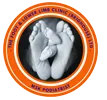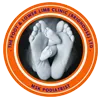
What Is Flat Foot Syndrome and How Podiatrists Can Help Alleviate the Pain
Flat foot syndrome, also known as fallen arches, is a common condition that can affect people of all ages. While some individuals are born with flat feet, others may develop the condition later in life due to factors like ageing, injury, or excessive weight. For many people, flat feet can lead to discomfort, pain, and difficulty performing everyday activities. However, with expert care from a Foot Clinic in Brighouse, it is possible to manage and alleviate the pain associated with flat foot syndrome.
In this blog post, we’ll explore what flat foot syndrome is, its symptoms, causes, and how podiatric care can provide effective treatments to help alleviate the pain and improve your quality of life.
What Is Flat Foot Syndrome?
Flat foot syndrome occurs when the arch of the foot collapses or fails to form properly, causing the entire sole of the foot to make contact with the ground. The arch, which typically acts as a shock absorber and supports the body’s weight, is either too low or nonexistent in people with flat feet. This condition can affect one or both feet and can lead to various problems, including pain, instability, and difficulty walking.
There are two main types of flat feet:
Flexible Flat Feet: This is the most common form, where the arches appear normal when sitting or lying down, but flatten out when standing or walking. Flexible flat feet tend to be less painful but can cause discomfort over time.
Rigid Flat Feet: This occurs when the arch does not form at all, even when not bearing weight. Rigid flat feet can be more painful and are often associated with structural problems or developmental issues in the foot.
While flat feet are often a genetic condition, other factors can contribute to the development of flat foot syndrome, including injury, ageing, obesity, or certain medical conditions such as arthritis or diabetes.
Symptoms of Flat Foot Syndrome
Flat foot syndrome can cause a variety of symptoms, some of which may be mild, while others can significantly affect your ability to walk or stand. Common symptoms include:
Pain or discomfort in the arch or heel of the foot
Swelling along the inside of the ankle
Difficulty standing or walking for long periods
Pain that worsens after exercise or long periods of activity
Over-pronation, where the feet roll inward while walking
Pain in the knees, hips, or lower back due to altered posture and gait
If you are experiencing any of these symptoms, it’s essential to seek professional care to prevent further complications and to begin managing the condition early.
Causes of Flat Foot Syndrome
Flat foot syndrome can be caused by a variety of factors, including:
Genetics: Some people are born with flat feet due to the structure of their bones and ligaments.
Age: As we age, the ligaments and tendons in our feet can weaken, leading to the collapse of the arches over time.
Injury: An injury to the foot or ankle, such as a sprain or fracture, can affect the tendons and ligaments, leading to flat feet.
Obesity: Excessive weight puts additional pressure on the feet, which can contribute to the development of flat foot syndrome.
Medical Conditions: Conditions such as arthritis, diabetes, or neuromuscular disorders can affect the function and structure of the feet, leading to flat feet.
In some cases, flat foot syndrome may not cause pain or significant issues. However, for others, the condition can lead to discomfort, pain, and other complications that affect daily activities.
How Podiatrists at a Foot Clinic in Brighouse Can Help Alleviate the Pain
If you are dealing with pain or discomfort from flat feet, a Foot Clinic in Brighouse can provide expert care to help alleviate your symptoms and improve your quality of life. Podiatrists are trained to assess the underlying causes of flat foot syndrome and offer tailored treatments that address your specific needs. Some of the most effective treatments include:
1. Custom Orthotics
One of the most common treatments for flat foot syndrome is the use of custom orthotics. These are specially designed insoles that provide additional support and cushioning to the feet. Custom orthotics are created based on the unique shape of your feet and can help redistribute pressure, improve foot alignment, and reduce pain. By providing better arch support, orthotics can alleviate the discomfort associated with flat feet and improve posture and gait.
2. Footwear Advice
The shoes you wear can have a significant impact on your flat foot symptoms. A Podiatrist in Brighouse can assess your footwear and offer recommendations on shoes that provide proper support for your feet. For individuals with flat foot syndrome, shoes with good arch support, a wide toe box, and cushioning are essential to reduce pressure on the feet and prevent pain. In some cases, orthotic-friendly shoes may be recommended to accommodate custom insoles.
3. Physical Therapy and Exercises
Physical therapy and specific foot exercises are crucial in managing flat foot syndrome. A podiatrist may recommend exercises to strengthen the muscles in your feet and lower legs, improving foot stability and flexibility. Strengthening the arch and calf muscles can reduce pain, improve your walking mechanics, and help prevent further flattening of the foot. Stretching exercises can also help improve flexibility in the Achilles tendon and other foot muscles, reducing tension and discomfort.
4. Weight Management
In cases where obesity or excess weight is contributing to flat foot syndrome, a podiatrist may recommend a weight management programme to reduce pressure on the feet. Losing weight can significantly reduce the strain on the arches, helping to alleviate pain and prevent further deterioration of the foot structure.
5. Surgical Options
In rare cases where conservative treatments do not provide sufficient relief, surgery may be considered. A podiatrist may recommend surgical procedures to realign the bones, tendons, and ligaments of the foot. Surgical options vary depending on the severity of the condition and the patient’s needs. In some cases, the procedure may involve tendon lengthening or a realignment of the bones to correct the flat foot deformity.
Surgical treatment is generally considered a last resort and is only recommended if other treatments have not been effective in alleviating pain and improving function.
Preventing Flat Foot Pain
Once flat foot syndrome is diagnosed and treated, it’s essential to maintain good foot health to prevent further issues. Here are some preventive tips:
Wear supportive footwear: Ensure that your shoes provide adequate arch support, cushioning, and stability.
Use orthotics: Custom-made insoles can provide long-term relief and prevent symptoms from returning.
Stay active and stretch: Regular exercise and stretching can help maintain foot strength and flexibility, preventing pain from recurring.
Maintain a healthy weight: Reducing excess weight can alleviate pressure on your feet and improve your overall foot health.
Conclusion
Flat foot syndrome can cause discomfort and pain, but with expert care from a Foot Clinic in Brighouse, it’s possible to manage the symptoms and improve your quality of life. Whether through custom orthotics, physical therapy, proper footwear, or surgery, a podiatrist can offer effective solutions to address the pain and discomfort associated with flat feet. If you’re struggling with flat foot syndrome, don’t wait for the condition to worsen—schedule an appointment with a podiatrist today and take the first step towards pain relief and better foot health.


